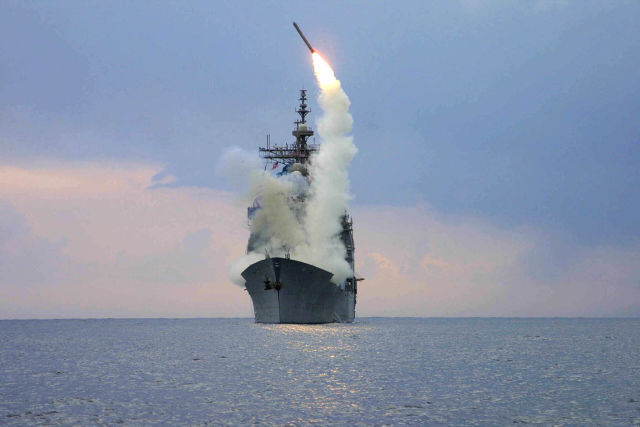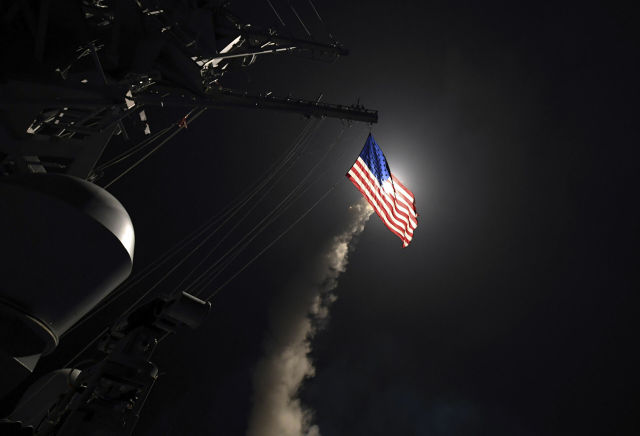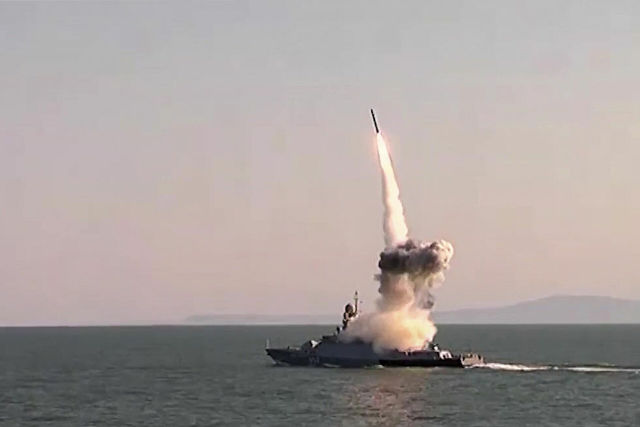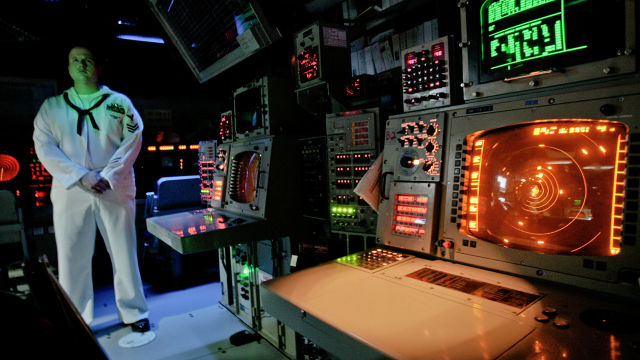MOSCOW, Dec 28-RIA Novosti, Andrey Kotz. Fly further, hit harder, ignore the opposition-the Americans tested a new modification of the Tomahawk cruise missile-Block V. In the Pacific Ocean, near the Hawaiian Islands, the destroyer Chafee fired at a target at a naval training ground. The US Navy succinctly reported: everything went well. About what is known about Block V and how Russian "Calibers" look against its background - in the material of RIA Novosti.
Two options
The development of Block V in the Pentagon is overshadowed by the frenzied pace of strengthening China's naval potential. China is really building large surface ships and submarines very quickly, actively developing their weapons and onboard systems. Americans are seriously afraid of losing their advantage in the world's oceans — according to experts, China will have 420 pennants by 2035.

Launch of the Tomahawk cruise missile from the USS Cape St. George
Image source: CC0 / U.S. Navy photo by Intelligence Specialist 1st Class Kenneth Moll /
So the Pentagon increased the order for anti-ship weapons. By 2025, it is planned to purchase 850 missiles capable of destroying large surface targets at a great distance. Until recently, the arsenal of American sailors was only developed in the 1970s anti-ship "Harpoons" with a range of up to 280 kilometers. However, in 2018, the Navy received supersonic AGM-158C LRASM, capable of hitting sea targets at a distance of up to 900 kilometers.
However, the new weapon has not yet gone into production. Therefore, in parallel with the production of LRASM, the Pentagon decided to return to the good old subsonic Tomahawk anti-ship capabilities, which this missile lost in the mid-1990s after the adoption of the Block II variant. It is known that in Block V it is planned to turn all available "Tomahawks" of the fourth generation.
The first version will be designated Block Va and will be used from ships and submarines against surface targets. This variant was called MST (Maritime Strike Tomahawk — "sea strike "Tomahawk"). According to experts, it will combine active and passive radar and thermal imaging homing channels, as well as be equipped with a powerful data processing processor and a new inertial guidance unit. It is expected that this "Tomahawk" will be able to hit large surface moving targets at a distance of up to 1,600 kilometers.
There is also Block Vb. This is a "classic ""Tomahawk" for striking ground targets. It has a new penetrating warhead, the Joint Multiple Effects Warhead System (JMEWS), combining a cumulative preload with a penetrating warhead. Fuze — programmable, multi-purpose, capable of undermining the warhead in the air. This missile targets both fortified underground bunkers and conventional military installations.
Five reasons
Experts of the Internet portal Defense News explained why "Tomahawks" are relevant today — in the age of supersonic and hypersonic weapons. First, the Block V is significantly more accurate than its predecessors, and the range is enough to effectively counter the Chinese DF-26 and DF-21 missiles in the Asia-Pacific region. Secondly, the modified Tomahawk was protected from radioactive warfare and manufactured using stealth technologies, which significantly increases survival.

Launch of the Tomahawk missile from the missile destroyer USS Porter in the Mediterranean Sea
Image source: © AP Photo / U.S. Navy / Mass Communication Specialist 3rd Class Ford Williams
Third, the subsonic speed of the rocket gives an advantage over faster competitors. "Tomahawk" of the fifth version is more economical in terms of fuel consumption, therefore, the range of its effective action is much higher. Fourth, this rocket is relatively cheap. One launch of Block V will cost taxpayers a million dollars. The SM-6 supersonic ship-to-air missile costs, for example, four times as much.
And finally, the Block V does not differ from its predecessors in size, which will allow it to be used in the old Mk41 vertical launch installations, which are equipped with the Arleigh Burke destroyers and Ticonderoga cruisers. In addition, nuclear submarines such as "Los Angeles", some "Ohio", "Virginia" and "Seawolf"will be able to launch these missiles without any alterations in the design. It is expected that the Tomahawk Block V in both versions will go into mass production by 2023.
The main competitor
The closest analogue of the American "Tomahawks" is considered to be the Kalibr cruise missiles, which Russia first tested in combat conditions in the fall of 2015. Navy ships simultaneously attacked 26 terrorist targets in Syria with the latest weapons, successfully hitting almost all of them. These missiles are equipped with frigates of projects 22350 and 11356, corvettes of project 20385, small missile ships of projects 21631 and 22800, as well as submarines of projects 885, 636.3, 677, 971 and 877. In the near future, some of the Soviet-built pennants will also be converted into "Calibers".
The exact characteristics of the Kalibr family of missiles are unknown. However, Vladimir Putin, speaking at the Valdai Club on October 19, 2017, said that the range of a sea-based missile to a surface target is 1,400 kilometers — this is comparable to the new Tomahawks. The range of the version for shooting at ground targets is from two to 2600 kilometers. However, this is far from the limit.
In January 2018, some media outlets, citing sources in the Defense Ministry, reported that Russia is creating a modernized ship-based Kalibr-M cruise missile with a maximum firing range of more than 4.5 thousand kilometers. Note that the novelty is larger than its predecessors, and the weight of its warhead will approach a ton. The missile will be able to carry both conventional and nuclear warheads.

Launch from the Kalibr complex by a ship of the Caspian Flotilla during exercises
Image source: © Ministry of Defense of the Russian Federation
Judging by the available data, the Kalibr-M will surpass the new American Tomahawks in terms of tactical and technical characteristics. However, what the Americans have an undeniable advantage — so it is in the number of carriers of cruise missiles. The US Navy has more than a hundred surface and underwater pennants, armed with a large number of high-precision weapons. Russia today has a little more than 20 such ships.

